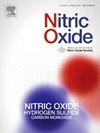Investigation of the relationships between eNOS T786C, G894T, intron 4 VNTR (4a/b) gene variations and prostate cancer development and progression
IF 3.2
2区 生物学
Q2 BIOCHEMISTRY & MOLECULAR BIOLOGY
引用次数: 0
Abstract
Background
This study aimed to investigate the relationships between eNOS T786C, G894T, intron 4 VNTR (4a/b) gene variations and prostate cancer development and progression.
Materials and methods
This study included 88 patients diagnosed with prostate cancer and 91 healthy controls. Polymerase chain reaction (PCR) and restriction fragment length polymorphism (RFLP) methods were used to determine the genotype distributions of eNOS T786C, G894T, intron 4 VNTR (4a/b) gene variations.
Results
In our study, the CC homozygous genotype of eNOS T786C gene variation was determined to be significantly higher in the prostate cancer patient group compared to the healthy control group (OR: 2.343, 95%Cl: 0.990–5.544, p = 0.026), while the CT heterozygous genotype was found to be significantly higher in the healthy control group compared to the prostate cancer patient group was found to be significantly higher (OR: 0.589, 95%Cl: 0.325–1.068, p = 0.041). In addition, while the TT homozygous genotype of the eNOS G894T gene variation was found to be significantly higher in the prostate cancer patient group compared to the healthy control group (OR: 9.068, 95%Cl: 4.396–18.777, p < 0.001), the GT heterozygous genotype was found to be significantly higher in the healthy control group compared to the prostate cancer patient group was determined significantly higher (OR: 0.227, 95%Cl: 0.121–0.427, p < 0.001). For eNOS (4VNTR (4a/b) - G894T) gene variations, aa-TT (p = 0.042) and bb-TT (p < 0.001) haplotype frequencies were significantly higher in the prostate cancer patient group, while aa-GT (p = 0.017), bb-GG (p = 0.049) and bb-GT (p < 0.001) haplotype frequencies were found to be significantly higher in the healthy control group. For eNOS (4VNTR (4a/b) - T786C) gene variations, the bb-CC haplotype frequency was determined to be significantly higher in the patient group (p = 0.049), while the bb-CT haplotype frequency was determined to be significantly higher in the control group (p = 0.008). For eNOS (T786C -G894T) gene variations, TT-TT (p < 0.001) and CC-TT (p = 0.025) haplotype frequencies were found to be significantly higher in the patient group. On the other hand, TT-GT (p = 0.002) and CT-GT (p < 0.001) haplotype frequencies were determined to be significantly higher in the control group. The aa genotype of the intron 4 VNTR (4a/b) gene variation was determined to be significantly higher at Gleason score ≥7 compared to Gleason score <7 (OR: 0.184, 95%Cl: 0.050–0.677, p = 0.005). PSA levels were determined significantly higher in patients with Gleason score 7 and above (p = 0.008). The risk of developing prostate cancer was found to be significantly higher in patients carrying the CC homozygous mutant genotype of the eNOS T786C gene variation (p = 0.024) and in patients carrying the TT homozygous genotype of the G894T gene variation (p = 0.021).
Conclusions
In our study, the CC homozygous genotype of the eNOS T786C gene variation was determined as a genetic risk factor for the development of prostate cancer, while the CT heterozygous genotype was determined as a protective factor against prostate cancer. For the eNOS G894T gene variation, the TT homozygous genotype was determined as a genetic risk factor for the development of prostate cancer, while the GT heterozygous genotype was determined as a protective factor against prostate cancer. Additionally, for eNOS (4VNTR (4a/b) - G894T) gene variations, aa-TT and bb-TT haplotypes have been identified as genetic risk factors for the development of prostate cancer, while aa-GT, bb-GG and bb-GT haplotypes have been identified as protective factors against the disease has been determined. For eNOS (4VNTR (4a/b) - T786C) gene variations, the bb-CC haplotype was determined as a genetic risk factor in the development of prostate cancer, while the bb-CT haplotype was determined as a protective factor against the disease. TT-TT and CC-TT haplotypes for eNOS (T786C -G894T) gene variations have been identified as genetic risk factors for the development of prostate cancer. In contrast, TT-GT and CT-GT haplotypes were found to be protective factors against the disease. The aa genotype of the intron 4 VNTR (4a/b) gene variation has also been identified as an important genetic risk factor in prostate cancer progression. Significantly increased PSA levels in patients with Gleason score 7 and above, and significantly increased PSA levels in patients carrying the CC and TT homozygous mutant genotype for T786C and G894T gene variations were determined as important risk factors. It is thought that the genetic biomarkers in our study may play a role as personalized therapeutic agents in slowing down the development of prostate cancer, increasing the effectiveness of treatment in prostate cancer, affecting the responses to drugs that regulate NO signaling, predetermining genetic predisposition to prostate cancer, and risk assessment in patients with prostate cancer.
研究 eNOS T786C、G894T、内含子 4 VNTR (4a/b) 基因变异与前列腺癌发展和恶化之间的关系。
背景:本研究旨在探讨 eNOS T786C、G894T、内含子 4 VNTR(4a/b)基因变异与前列腺癌发生和发展的关系:本研究旨在探讨 eNOS T786C、G894T、内含子 4 VNTR(4a/b)基因变异与前列腺癌的发生和发展之间的关系:研究对象包括 88 名确诊为前列腺癌的患者和 91 名健康对照者。聚合酶链式反应(PCR)和限制性片段长度多态性(RFLP)方法用于确定 eNOS T786C、G894T、4 号内含子 VNTR(4a/b)基因变异的基因型分布:在我们的研究中,与健康对照组相比,前列腺癌患者中 eNOS T786C 基因变异的 CC 同源基因型显著较高(OR:2.343,95%Cl:0.990-5.544,p = 0.026),而在健康对照组中发现 CT 杂合基因型与前列腺癌患者组相比明显更高(OR:0.589,95%Cl:0.325-1.068,p = 0.041)。此外,与健康对照组相比,前列腺癌患者组 eNOS G894T 基因变异的 TT 同源基因型明显更高(OR:9.068,95%Cl:P):在我们的研究中,eNOS T786C 基因变异的 CC 同源基因型被确定为前列腺癌的遗传风险因素,而 CT 杂合基因型被确定为前列腺癌的保护因素。就 eNOS G894T 基因变异而言,TT 同源基因型被确定为前列腺癌的遗传风险因素,而 GT 杂合基因型被确定为前列腺癌的保护因素。此外,对于 eNOS(4VNTR (4a/b) - G894T)基因变异,aa-TT 和 bb-TT 单倍型被确定为前列腺癌的遗传风险因素,而 aa-GT、bb-GG 和 bb-GT 单倍型被确定为前列腺癌的保护因素。就 eNOS(4VNTR (4a/b) - T786C)基因变异而言,bb-CC 单倍型被确定为前列腺癌的遗传风险因素,而 bb-CT 单倍型被确定为前列腺癌的保护因素。eNOS(T786C -G894T)基因变异的 TT-TT 和 CC-TT 单倍型已被确定为前列腺癌的遗传风险因素。相比之下,TT-GT 和 CT-GT 单倍型则被认为是前列腺癌的保护因素。内含子 4 VNTR(4a/b)基因变异的 aa 基因型也被确定为前列腺癌进展的重要遗传风险因素。Gleason 评分 7 分及以上患者的 PSA 水平明显升高,T786C 和 G894T 基因变异的 CC 和 TT 同源突变基因型患者的 PSA 水平也被确定为重要的风险因素。据认为,我们研究中的基因生物标志物可作为个性化治疗药物,在延缓前列腺癌的发展、提高前列腺癌的治疗效果、影响对调节 NO 信号转导的药物的反应、预先确定前列腺癌的遗传易感性以及评估前列腺癌患者的风险等方面发挥作用。
本文章由计算机程序翻译,如有差异,请以英文原文为准。
求助全文
约1分钟内获得全文
求助全文
来源期刊

Nitric oxide : biology and chemistry
生物-生化与分子生物学
CiteScore
7.50
自引率
7.70%
发文量
74
审稿时长
52 days
期刊介绍:
Nitric Oxide includes original research, methodology papers and reviews relating to nitric oxide and other gasotransmitters such as hydrogen sulfide and carbon monoxide. Special emphasis is placed on the biological chemistry, physiology, pharmacology, enzymology and pathological significance of these molecules in human health and disease. The journal also accepts manuscripts relating to plant and microbial studies involving these molecules.
 求助内容:
求助内容: 应助结果提醒方式:
应助结果提醒方式:


